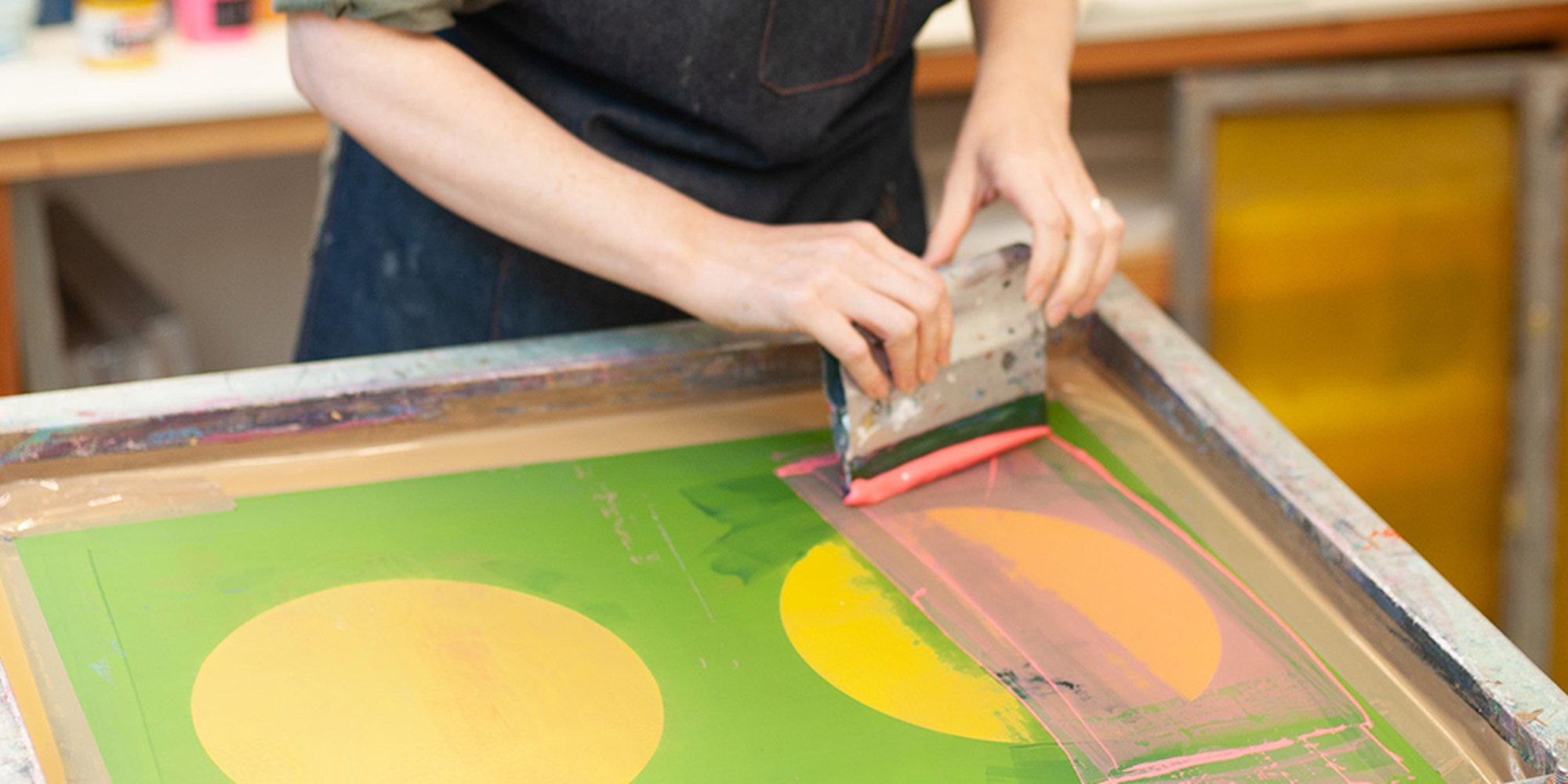The Important Guide to Understanding Screen Printing and Its Versatile Makes use of
Screen printing has a rich background that dates back to ancient times, progressing right into an advanced strategy utilized across numerous markets today. This guide explores the intricacies of the screen printing process, outlining its applications in fashion, advertising and marketing, and home style - 10:9 Design LLC Company. Understanding these basics can open up creative capacity for both artistic and business projects. The complying with areas will certainly reveal vital tips and methods to enhance one's screen printing undertakings
The Background of Screen Printing
Screen printing has roots that map back centuries, its development shows the artistic and technological improvements of numerous societies. Originating in ancient China, the strategy was initially utilized for embellishing fabrics and later spread to Japan, where it came to be indispensable to Ukiyo-e woodblock printing. The method shifted to Europe in the 18th century, where it got popularity amongst craftsmens and industrial printers. The invention of picture emulsion in the 20th century revolutionized screen printing, permitting even more complex layouts and higher effectiveness. Artists like Andy Warhol further drove its appeal, making use of the medium to create legendary works that mixed commercialism and fine art. By the late 20th century, screen printing had developed itself as a flexible strategy, used in fashion, advertising and marketing, and art. Today, it proceeds to progress, incorporating electronic modern technology and expanding its applications across various industries.
The Screen Printing Refine Explained
Screen printing transforms imaginative visions into concrete designs via a collection of exact actions. At first, a picture is developed and after that transferred onto a screen, usually made of fine mesh material extended over a framework. A light-sensitive solution is put on the screen, which is revealed to light, hardening in areas not covered by the photo. After rinsing the unhardened solution, a stencil is created.
Next off, the screen is placed over the substrate, whether it be textile, paper, or an additional product. Ink is then pushed with the open areas of the stencil utilizing a squeegee, transferring the design onto the substrate listed below. This process can be duplicated for several colors, calling for different screens for each and every tone. The printed thing is treated making use of warm to guarantee the ink sticks effectively, resulting in a resilient, dynamic design all set for use.
Sorts Of Screen Printing Techniques

In addition, specialized strategies, such as discharge screen printing, get rid of color from the textile to produce softer prints, while foil screen printing uses metal foil to achieve a glossy finish (10:9 Design reviews). Each method supplies distinct qualities, accommodating numerous imaginative demands and manufacturing ranges, ultimately increasing the opportunities within the screen printing domain name
Applications of Screen Printing in Numerous Industries

check that Additionally, the signage and marketing industries make use of screen printing for developing appealing screens and banners. This approach enables bold colors and detailed layouts that capture attention. In electronic devices, screen printing is used for using conductive inks to motherboard, important for element connections. Moreover, the home décor market accepts screen printing to create unique designs on textiles and wall art. In general, screen printing offers as an essential tool across diverse fields, enhancing products with customized and visually appealing graphics.
Tips for Successful Screen Printing Projects
While undertaking a screen printing task, cautious focus to detail can significantly enhance the final end result. Initially, choosing high-grade materials is important; this includes the screen, inks, and substrates. Making use of appropriate mesh matters can impact ink deposition and detail resolution. Preparation is just as crucial; thorough cleansing of screens and appropriate direct exposure times assure crisp prints.
Next off, accurate registration is crucial for multi-color prints. Utilizing alignment tools can aid attain specific layering. Furthermore, screening prints on scrap materials before production helps determine potential concerns without wasting sources.

Regularly Asked Concerns
What Products Are Ideal for Screen Printing on Material?
Cotton and polyester blends are perfect for screen printing on fabric due to their durability and ink absorption. Additionally, specialty textiles like silk or canvas can create one-of-a-kind structures and coatings, enhancing the general design high quality.
How Do I Clean and Maintain Screen Printing Devices?
To clean and maintain screen printing devices, one need to frequently clean screens with suitable solvents, check squeegees for wear, oil relocating parts, and store all products in a dry, dust-free environment to lengthen their life expectancy.
What Are the Ecological Effects of Screen Printing?
Screen printing can have significant ecological impacts, including chemical waste from solvents and inks, water use throughout cleaning procedures, and energy usage. Sustainable practices and green products are necessary for reducing these unfavorable effects.
Can Screen Printing Be Done in the house Properly?
Screen printing can be effectively done at home with the best products and techniques. Hobbyists can create quality prints, though success depends upon their ability level, tools, and understanding of the process entailed.
What Are the Expenses Connected With Beginning a Screen Printing Business?

Starting a screen printing company entails prices for devices, materials, and workspace. Initial costs generally vary from a few hundred to a number of thousand dollars, depending on the scale, quality of machinery, and wanted manufacturing ability.
Screen printing has an abundant history that dates back to ancient times, developing right into an innovative technique used throughout different industries today. An additional technique, rotating screen printing, employs round displays, assisting in continuous printing on material rolls, thus enhancing efficiency additional hints for large productions. Furthermore, specialized methods, such as discharge screen printing, remove dye from the material to create softer prints, while aluminum foil screen printing uses metal foil to accomplish a glossy finish. In the fashion market, screen printing is commonly utilized to develop lively layouts on clothing, making it possible for brand names to showcase their unique designs. Cotton and polyester blends are excellent for screen printing on material due to their sturdiness and ink absorption.